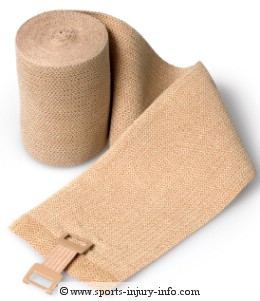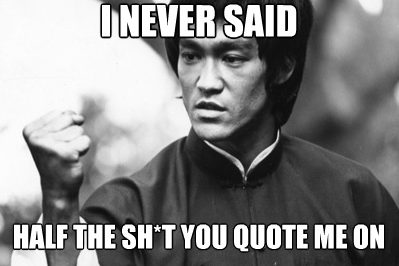Snap!
Crack!
Bam!
Pop!
An injury has occured.
Perhaps you were just doing some light sparring, or stretching. Perhaps you were just warming up. Or perhaps you went crazy on the makiwara, busting off some tameshiwari afterwards!
But suddenly it’s there.
- A sprained ankle.
- A swollen knee.
- A cracked elbow.
Injuries don’t discriminate: It doesn’t matter if you’re a black belt or white belt, old or young – an injury will hit you hard, both mentally and physically. It’s inevitable.
We’ve all been there.
And most likely we’ll be there again.

But don’t worry.
There is help.
You see, although we are pretty bad-ass in Karate (punching and kicking each other up and down the dojo) there are other sports and activities where people aren’t as hard. In those sports – like soccer, football, ice hockey and tennis – scientists have been studying acute injuries for a long time, in order to find the most effective and ultimate way for speeding up players’ recovery processes.
The result of thousands of hours of studies and tests is what we in sports science today refer to as the P.R.I.C.E. method (formerly just R.I.C.E.).
Ever heard about it?
Don’t worry if you haven’t. That’s what I’m here for.
________
Enter the P.R.I.C.E. method.
The acronym P.R.I.C.E, which stands for Pressure, Rest, Ice, Compression and Elevation, is an easy way to remember the five most important principles used to speed up injury recovery.
The method is widely used by professional athletes and sports teams worldwide, but has for some reason remained pretty unknown amongst regular hobbyists and practitioners – despite the fact that passionate amateurs are some of the most injury prone people out there (especially in contact sports and martial arts)!
So, let’s change that.
I’m not saying you’ll get bullet-proof by following the five steps of the P.R.I.C.E. – but you’ll be one step closer than the regular Joe.
And you’ll get back to training ten times faster.
Let’s go:
P is for Pressure:
Immediately as an injury occurs, put pressure on it.
This is already a natural instinct for most people, you’ve been doing this your whole life – when you hit your toe on a chair, you jump and hold you toe (put pressure on it), right? Or if you hit your elbow on something hard, you’ll hug your elbow hard with your other hand.
It’s already a natural instinct – for a reason.
So go with it.
As soon as you injure some body part, put pressure on it.
This is the critical first step in minimizing swelling, and will speed up your recovery process significantly.
R is for Rest:
The second step, which is pretty obvious to regular people (yet I’ve seen many top athletes ignore this step only to regret it badly afterwards), is to rest.
 In other words, stop what you’re doing and chillax.
In other words, stop what you’re doing and chillax.
Take a chill pill.
Sure, less severe injuries may be rested by merely avoiding any activities which uses the affected body part, but for more serious (musculoskeletal) injuries you’ll need complete rest for 2-3 days to heal properly.
Yes, it’s incredibly boring and frustrating, especially if you’re used to working out daily.
But think long-term.
Using the injured body part too early can increase hemorrhage, cause further damage to the area and ultimately prolong recovery.
If it’s boring, just read a book or something!
I is for Ice:
Although the use of ice in sport injury management has been criticized lately, one thing remains clear:
Icing an injury reduces pain.
You know how hard it is to button up a coat in the winter? That’s because your fingers have lost their feeling – they’re numb from the cold.
The same applies to your Karate injury.
So, to reduce pain, apply ice (frozen peas work well) on the injured area, making sure you have some cloth between the ice and your skin. And sure, there is evidence that ice decreases swelling, bleeding, spasm and inflammation, but there’s also strong evidence that ice makes everything worse – so just use it to reduce the sensation of pain (by numbing the pain receptors) and then stop icing.
Got that?
Great.
C is for Compression:
Pretty similar to immediate Pressure (step one), Compression is all about using an elastic wrap, a towel, a t-shirt, karate belt or boxing wrap or something similar (whatever you have at hand!) to tightly compress the injured body part.
 This is why you should always have an elastic wrap in your bag.
This is why you should always have an elastic wrap in your bag.
Super important.
Direct external pressure applied to the injured area will greatly help decrease hemorrhage and bleeding, and should be continued throughout the day (with occasional re-wraps).
For difficult areas, such as around the bony areas of the ankle, pads can be cut and held in place with athletic tape and/or an elastic wrap.
Also, keep in mind that hard compression should be removed at night.
Unless you wish to amputate something later…
E is for Elevation:
Lastly, to help reduce internal bleeding and swelling, you should quickly elevate the injured body part (above the level of the heart).
To make it easy, simply lie on the floor and put something under the injured body part.

This will decrease the bleeding (harder for the heart to pump blood), as well as facilitate venous return and prevent the pooling of fluids in the injured area.
This is especially important at night when the body processes slow down – so get an extra pillow!
___________
And with that being said, we have just covered the five basic principles of the P.R.I.C.E. method.
If you are a passionate Karate enthusiast, teacher or coach, I highly suggest you memorize the acronym (here’s some memory help: What do the Japanese eat? RICE. Which is made in a Pressure cooker, right? That’s PRICE!).
The P.R.I.C.E method has worked wonders for me my whole career, not only helping myself but also a whole bunch of friends and students (and strangers!) who’ve injured themselves either in regular dojo training or competitions.
Don’t be this guy:
“I’ve got no hamstring in the middle. I’m basically running on two hamstrings on my right leg and three on the other. That injury has probably changed my whole career. I’ve been compromised from the age of 19.” – Michael J. Owen
Apply P.R.I.C.E.
Pressure, Rest, Ice, Compression, Elevation.
It doesn’t get much easier.
Stay safe!



14 Comments